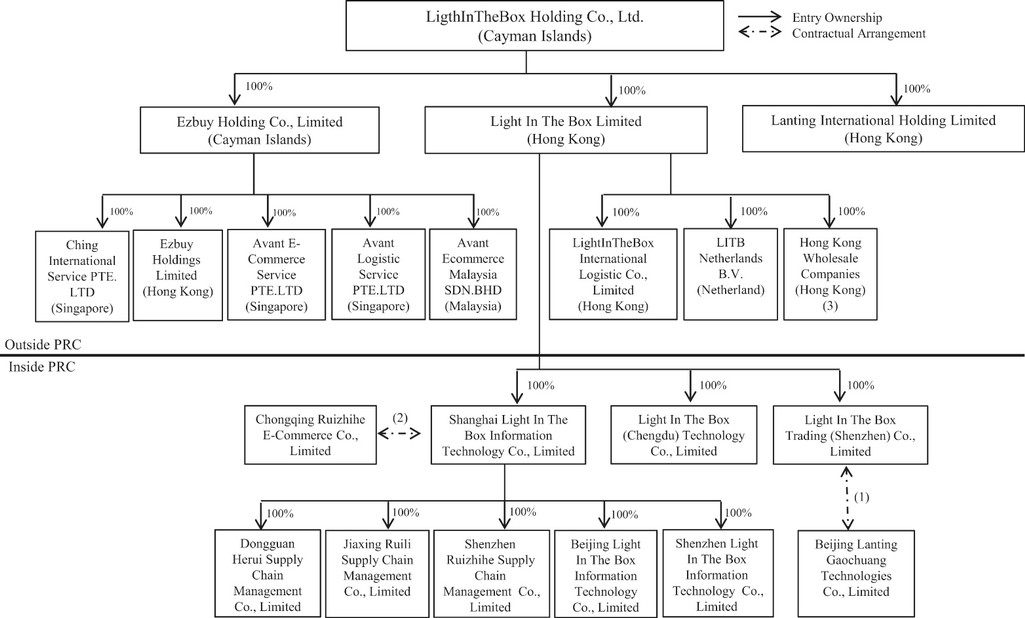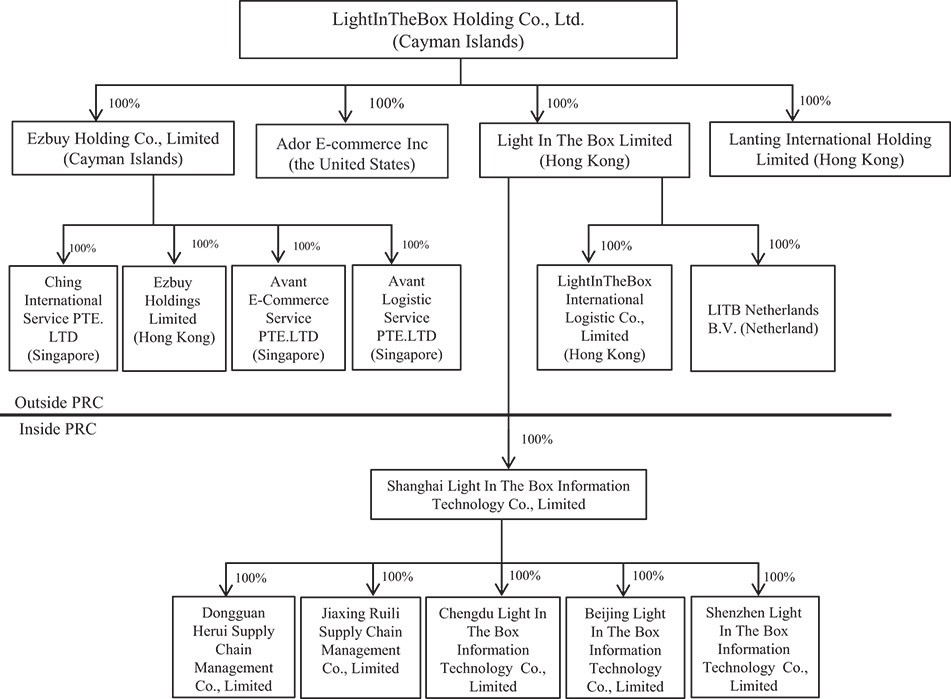On March 24, 2021, the SEC adopted interim final rules to implement certain disclosure and documentation requirements of the HFCAA, which became effective on May 5, 2021. The requirements of annual report for foreign issuers have been updated by the SEC to reflect the disclosure requirements, which require disclosure in a foreign issuer’s annual report regarding the audit arrangements of, and governmental influence on, such foreign issuer. A foreign issuer would be required to comply with such disclosure requirement if the SEC identified it as having a “non-inspection” year. On May 13, 2021, the PCAOB proposed a new rule to implement the HFCAA, which was subsequently adopted by PCAOB on September 22, 2021 and approved by the SEC on November 5, 2021. Among other things, the proposed rule provides a framework for the PCAOB to determine, under the HFCAA, whether it is unable to inspect or investigate completely registered public accounting firms located in a foreign jurisdiction because of a position taken by one or more authorities in that jurisdiction. The proposed rule also established the approach, evaluation factors, required documents and information, form, public availability, effective date and duration of such determinations and the process by which the board of the PCAOB can modify or vacate its determinations. On June 22, 2021, the U.S. Senate passed a bill and if eventually signed into law, would reduce the number of consecutive non-inspection years required for triggering the prohibitions under the HFCA Act from three years to two. The SEC may propose additional rules or guidance that could impact us if our auditor is not subject to the PCAOB inspection. The SEC have implemented some of the concepts recommended in the PWG report published in 2013, which were more stringent than the HFCAA. For example, if a company was not subject to the PCAOB inspection, the report recommended that the transition period before a company would be delisted would end on January 1, 2022. On December 2, 2021, the SEC issued amendments to finalize the interim final rules adopted in March 2021, and established procedures to identify and prohibit the trading of the securities of certain registrants under the HFCAA. On December 16, 2021, the PCAOB issued a report on its determination that it is unable to inspect or investigate completely PCAOB-registered public accounting firms headquartered in China and in Hong Kong because of positions taken by PRC and Hong Kong authorities in those jurisdictions. The PCAOB has made such determination as mandated under the Holding Foreign Companies Accountable Act. Pursuant to each annual determination by the PCAOB, the SEC will, on an annual basis, identify issuers that have used non-inspected audit firms and thus are at risk of such suspensions in the future. Since our auditor is located in China, a jurisdiction where the PCAOB has been unable to conduct inspections without the approval of the Chinese authorities, our auditor is not currently inspected by the PCAOB. The lack of the inspections prevents the PCAOB from fully evaluating audits and quality control procedures of the auditors of our consolidated financial statements included in this document and our annual reports on Form 20-F filed with the SEC. As a result, we and investors in our ordinary shares are deprived of the benefits of such PCAOB inspections, which could cause investors and potential investors in our stock to lose confidence in our reported financial information and the quality of our financial statements.
The enactment of Act and any additional rulemaking efforts to increase U.S. regulatory access to audit information in China could cause investor uncertainty for affected SEC registrants, including us, the market price of our ADSs could be materially adversely affected, and our ADSs could be delisted if we are unable to meet the PCAOB inspection requirement in time. Furthermore, there has been media reports on deliberations within the U.S. government regarding potentially limiting or restricting China-based companies from accessing U.S. capital markets. If any such deliberations were to materialize, the resulting legislation may have material and adverse impact on the stock performance of China-based issuers listed in the United States.
Risks Related to the ADSs
Our ADSs may be delisted under the HFCAA if the PCAOB is unable to adequately inspect audit documentation located in China. The delisting of our ADSs, or the threat of their being delisted, may have a material adverse impact on our listing and trading in the U.S. and the trading prices of our ADSs.
Pursuant to the HFCAA, if the Public Company Accounting Oversight Board (the “PCAOB”), is unable to inspect an issuer’s auditors for two consecutive years, the issuer’s securities are prohibited to trade on a U.S. stock exchange. The PCAOB issued the 2021 Determinations on December 16, 2021 which found that the PCAOB is unable to inspect or investigate completely registered public accounting firms headquartered in: (1) mainland China of the People’s Republic of China because of a position taken by one or more authorities in mainland China; and (2) Hong Kong, a Special Administrative Region and dependency of the PRC, because of a position taken by one or more authorities in Hong Kong. Furthermore, the 2021 Determinations identified the specific registered public accounting firms which are subject to these determinations (“PCAOB Identified Firms”).
The Company’s current auditor, Marcum Asia CPAs LLP, the independent registered public accounting firm that issues the audit report included elsewhere in this annual report, as an auditor of companies that are traded publicly in the United States and a firm registered with the PCAOB, is subject to laws in the U.S. pursuant to which the PCAOB conducts regular inspections to assess its compliance with the applicable professional standards. Marcum Asia CPAs LLP, whose audit report is included in this annual report, is headquartered in New York and, as of the date of this annual report, was not included in the list of PCAOB Identified Firms in the 2021 Determinations.
On August 26, 2022, the PCAOB announced that it had signed a Statement of Protocol (the “SOP”) with the China Securities Regulatory Commission (the “CSRC”) and the Ministry of Finance (“MOF”) of the People’s Republic of China, governing inspections and investigations of audit firms based in mainland China and Hong Kong. Pursuant to the SOP, the PCAOB conducted inspections on select registered public accounting firms subject to the 2021 Determinations in Hong Kong between September and November 2022.
On December 15, 2022, the PCAOB board announced that it has completed the inspections, determined that it had complete access to inspect or investigate completely registered public accounting firms headquartered in mainland China and Hong Kong, and voted to vacate the 2021 Determinations.
Notwithstanding the foregoing, the Company’s ability to retain an auditor subject to the PCAOB inspection and investigation, including but not limited to inspection of the audit working papers related to us, may depend on the relevant positions of U.S. and Chinese regulators. Marcum Asia CPAs LLP’s audit working papers related to us are located in China. With respect to audits of companies with operations in China, such as the Company, there are uncertainties about the ability of its auditor to fully cooperate with a request by the PCAOB for audit working papers in China without the approval of Chinese authorities. If the PCAOB is unable to inspect or investigate completely the Company’s auditor because of a position taken by an authority in a foreign jurisdiction, or the PCAOB re-evaluates its determination as a result of any obstruction with the implementation of the SOP, then such lack of inspection or re-evaluation could cause trading in the Company’s securities to be prohibited under the HFCAA, and ultimately result in a determination by a securities exchange to delist the Company’s securities. Accordingly, the HFCAA calls for additional and more stringent criteria to be applied to emerging market companies upon assessing the qualification of their auditors, especially the non-U.S. auditors who are not inspected by the PCAOB.
On December 29, 2022, the AHFCAA, was signed into law, which reduced the number of consecutive non-inspection years required for triggering the prohibitions under the HFCAA from three years to two. As a result, the risks mentioned above have been heightened.
If our ADSs are subject to a trading prohibition under the HFCAA or the AHFCAA, the price of our ADSs may be adversely affected, and the threat of such a trading prohibition would also adversely affect their price. If we are unable to be listed on another securities exchange that provides sufficient liquidity, such a trading prohibition may substantially impair your ability to sell or purchase our ADSs when you wish to do so. Furthermore, if we are able to maintain a listing of our ordinary shares on a non-U.S. exchange, investors owning our ADSs may have to take additional steps to engage in transactions on that exchange, including converting ADSs into ordinary shares and establishing non-U.S. brokerage accounts.

